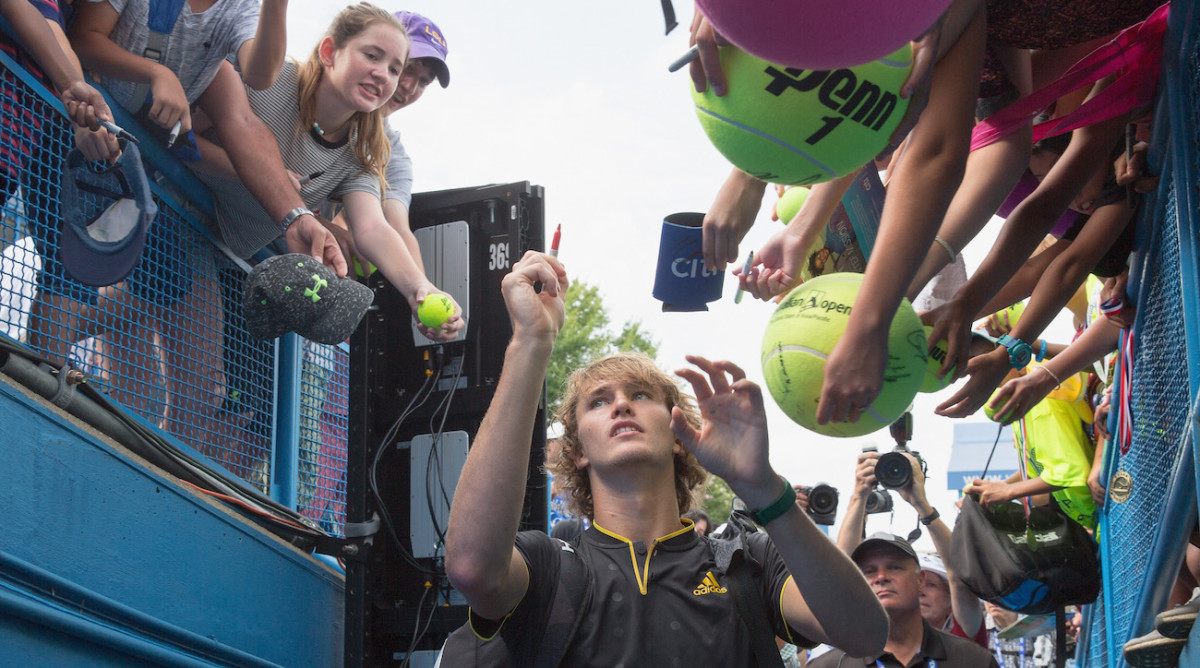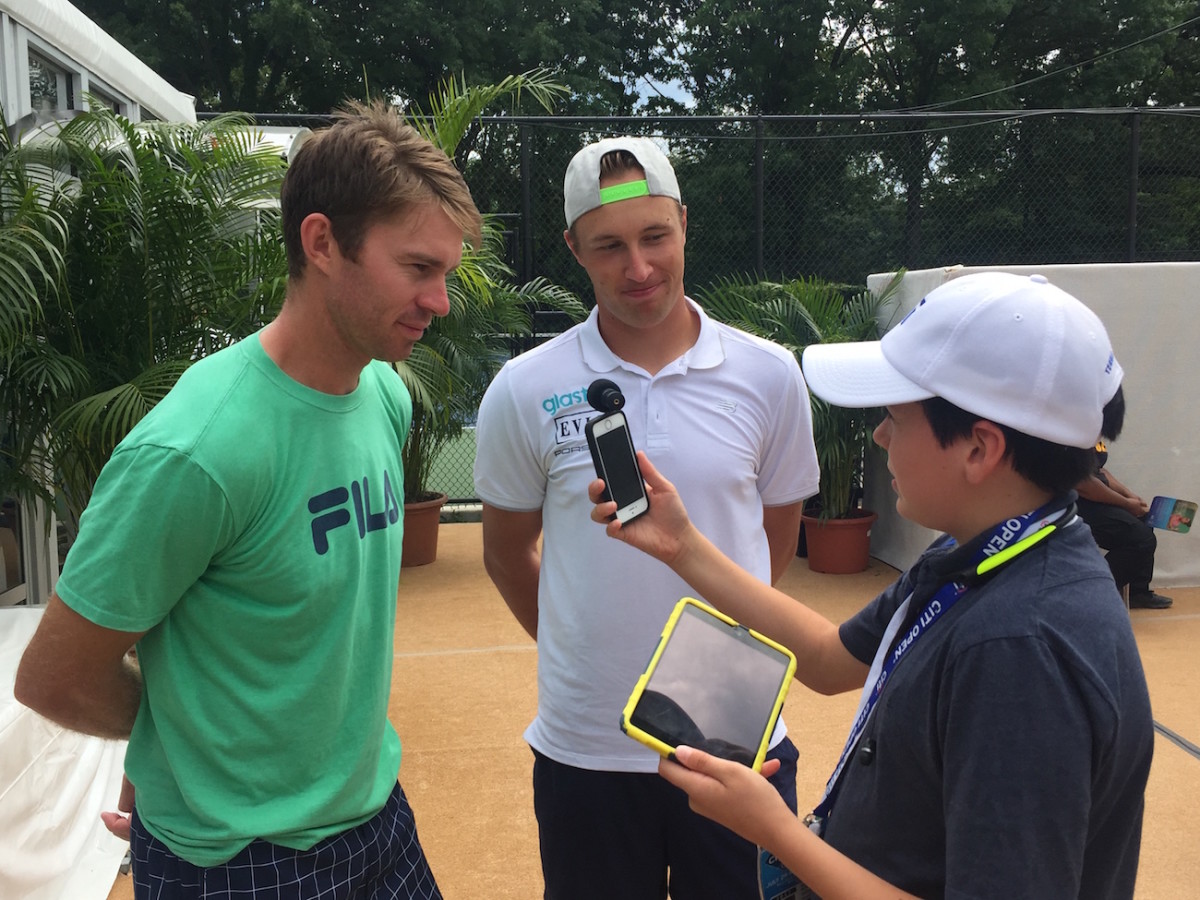Citi Open in Washington D.C. About More Than Tennis

After seven days of hard work, persistence, and sweltering heat, the victors were crowned at the 2017 Citi Open tennis tournament in Washington D.C. on Sunday.
This year’s champions were Germany’s Alexander Zverev for men’s singles, Russia’s EkaterinaMakarova for women’s singles, Finland’s Henri Kontinen and England’s John Peers for men’s doubles, and Japan’s ShukoAoyama and the Czech Republic’s Renata Voráčová for women’s doubles.
Said men’s singles finalist Kevin Anderson of this venerable tournament and its host city, “I like being in Washington. I think it’s a fantastic city, and I always enjoy coming here. It often kicks off the beginning of the whole U.S. summer swing, and it’s one my favorite times of the year.”
The Citi Open, or the Washington Open, hosted its first tournament in July of 1969. The founders, Donald Dell, Steve Potts, and John Harris, thought it was ridiculous that D.C. didn’t have a tennis tournament when cities like Chicago and New Orleans hosted flourishing tournaments. They knew what they would need to start the Washington Open: talent.
The star player of the 1960s was Arthur Ashe. Ashe was the first African-American player to win the U.S. Open and the only African-American ever to win Wimbledon. He was also a civil rights advocate. Dell and Co. knew they needed Ashe to play if they wanted their tournament to be successful.
Ashe agreed on one condition: The Open needed to be played in a more diverse part of D.C. so everyone could watch tennis, not just white people. The decision was made to hold the tournament in Rock Creek Park, a more diverse part of D.C. Ashe signed on to play, and the tournament began.
From the start, the Washington Open wasn’t just a tennis tournament. Players also taught tennis clinics to kids during the week. That unique aspect is still true of the Citi Open. There are tournaments for kids of all ages at the Open. Players also regularly stop to sign autographs and take selfies with kids.
One of the biggest problems of the Washington Open has always been the heat. D.C.’s temperatures hit 85 degrees almost every day this year, and the city was recently named one of the six hottest in America.
Over the years, players have developed different solutions to deal with the heat. The first Citi Open champion, Thomaz Koch, soaked leaves in water and put them in his headband to stay cool. This year’s men’s doubles champions Henri Kontinen and John Peers tried to drink a lot of water. Women’s singles champion Ekaterina Makarova tried not to think about it. But the heat was an advantage for the Citi Open men’s doubles finalist, Marcelo Melo. “I’m from Brazil, and Brazil is always hot, so the heat doesn’t bother me. It’s an advantage for me. I’ve been practicing and playing in the sun my entire life, so it doesn’t really affect me,” he said.
What’s so special about the Citi Open? The city (no pun intended). “I like the city. I have a good time here. I like the crowd. I feel at home,” said women’s doubles champion Renata Voráčová.
“I love Washington, D.C.; I have played here many years. The staff really takes care of the players, so I’m glad I’ve been part of this tournament for a very long time,” said Melo.
“There’s so much stuff do in the city,” said men’s doubles champion John Peers. “It’s always nice and relaxing to train here because there are plenty of courts. There’s always a great turn out, crowd-wise, so it’s a lot of fun.”
Added women’s singles finalist, Julia Goerges, “I just love [Washington] because it’s completely different from other cities. There are no skyscrapers. It just feels different with all the green and the parks.”
While in DC, some athletes do more than just play. They see the monuments. “We all go sight seeing,” said Melo. “It’s fantastic for me to see from another view. I went on a boat tour of D.C. and really enjoyed it. I hope to do it again next year.”
Now, the results.

Men’s Singles Final: No. 5 seed Alexander Zverev vs. No. 15 seed Kevin Anderson
Zverev and Anderson battled back and forth, each holding serve until Zverev finally broke it. This gave him the advantage throughout the match. Zverev would break once or twice, but otherwise everyone held serve. Zverev won the first set 6–3 and the second set 6-4.
Anderson seemed to be mounting a comeback at the end of the second set but still fell to Zverev. The loss wasn’t all negative. “I think I can take a ton of positives from this week, and I’ve been able to do that the past few times,” said Anderson. “There are definitely a few things that I would have liked to have done better. I definitely played some of my best tennis here. I think some of the stuff I’ve been working on is starting to show on the match court. I think it’s been a great start to the summer.”
As for Zverev, he was thrilled with the win. “Almost every match I’ve played great in the finals. I feel like the longer the tournament gets for me, the better I start to play,” he said.
Men’s Doubles Final: Henri Kontinen and John Peers vs. Marcelo Melo and Lukasz Kubot
This was a match of the two best teams in the world. The best: Kontinen and Peers. The second best: Melo and Kubot.
Kontinen and Peers were fresh off a victory over Bruno Soures and Jaime Murray, younger brother of current world No. 1 Andy Murray. Melo and Kubot had narrowly beaten Bob and Mike Bryan, perhaps the best doubles team of all time (16 Grand Slam titles, more than any other men’s doubles players in the Open Era).
The first set was a nail-biter; no team really had an advantage until Kontinen and Peers took over late in the tiebreaker. They won 7–6 in the first set on a tiebreak. Kontinen and Peers took over in the second set and won 6–4 in their first Citi Open victory. This ended Melo and Kubot’s 17-match winning streak, a rare occurrence in men’s doubles.
Peers had an interesting approach to the way you should think in the middle of a tennis match: “To be honest, we don’t really look at the outcome of the match. For us it’s all about trying to enjoy what we’re doing out there, compete, and play with the right mindset and play with the right attitude and do what we want to do. It was good that it worked out today too.”
Kontinen and Peers have now played Melo and Kubot twice in tournament finals and once in a quarterfinal. When asked if playing them three times helped them learn Melo and Kubot’s strategy, Peers said, “To be honest, I think most of the guys we play against, we all know what each other wants to do. It’s just a question of whether we can execute it on the day and that’s why the scores are always so close and why it’s so entertaining.” We’re sure to see this matchup again soon.

Women’s Singles Final: No. 7 seed EkaterinaMakarova vs. No. 4 seed Julia Goerges
Many fans who had seen Makarova come back from a 3–6 deficit in her semifinal match had a major déjà vu moment in the final when she lost the first set 3–6. She then outlasted Georges in the second half 7–6 on a tiebreaker.
The match was unbelievably close. A Goerges win seemed very likely during the late second set. But after the second set, it was over. Georges had put all her energy into the second set and was crushed in the third set. Makarova won the second set 6–0.
Makarova has an idea about why she won the the tournament. “Every match I played in, I believe that I can turn it around,” she said. “I was just playing point by point, and sometimes when you don’t think about the score, you just play this point, next point, next point, then you see the score is going your way.” She has a chance a real chance to make her mark at the U.S. Open later this month.
Women’s Doubles Final: Unseeded Eugenie Bouchard and Sloane Stephens vs. No. 2 seed Shuko Aoyama and Renata Voráčová
Bouchard and Stephens proved to be no match for Aoyama and Voráčová, falling in two sets 6–3, 6–2. When asked what is important in a good doubles pair, Voráčová answered that the two partners have to have good chemistry. Aoyama and Voráčová had amazing chemistry. This loss should be more of a positive for Stephens and Bouchard; it was the first time they’ve ever played together. Once they practice together a little more, we could be looking at an astounding doubles team.
The Citi Open is truly an incredible event. If you’re ever in D.C. in late July to early August, you must check it out. It has an amazing history, fantastic programs for kids, and some of the world’s best players competing. What else could a tennis fan ask for?
Photographs by (from top): Tasos Katopodis/Getty Images (2); Aidan Kohn-Murphy
